Incubating future movements in travel and culture
Words Allison Reiber DiLiegroImages Sanda VuckovicVideo Eldon van Aswegen
The room is dim until suddenly, there is light. More than light: the cube is washed over in a psychedelic swirl of color, with shapes in shades of purple and green swirling and morphing into one another like the inside of a kaleidoscope. Music meanders through a sea of beats and melody. This is the Voxel Cube by MuLabs and what we are watching is one-of-a-kind: Premazzi is taking us inside her mind at this very moment.
The Lisbon-based MuLabs works with a neurofeedback model of accessing and processing brain information in real time and feeding it into a digital or physical interface so that a client can access it. MuArts, the company’s spinoff, was born to translate this academic research for the mainstream through performances that illustrate how this technology can be put to use.
Put more simply, “We work with brain-computer interaction,” Francisco Marques-Teixeira, neuroscientist, psychologist, and co-founder of MuLabs, tells us. “We use sensors to show people their own emotions and we use music and visual art to translate those emotions so it is easier for people to understand them.”
In Lisbon, we spoke with Marques-Teixeira and Premazzi to learn about their technology and art, how they hope their work will be used, and why they chose Lisbon as the place to bring it to life.
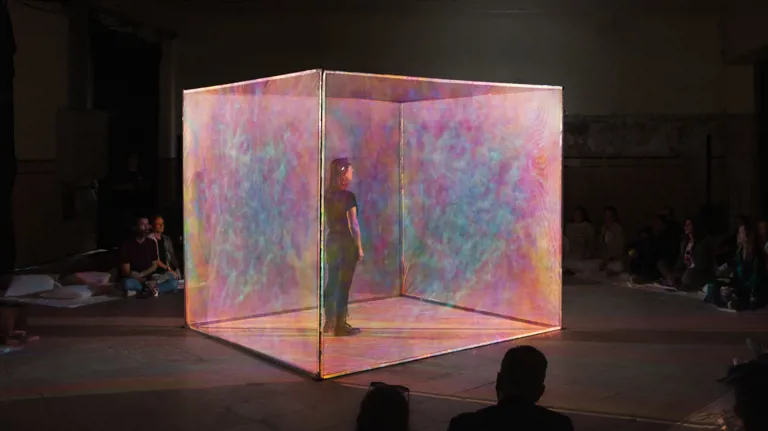
The Voxel Cube by MuLabs is an installation that translates the artist’s emotions into art in real time.
Francisco Marques-Teixeira: I started having more contact with Carlotta at a festival MuLabs organized in Lisbon called TRANS-LATE, “you experience art, art will experience yourself.” From the beginning, Carlotta was really curious about the brain and started doing research in the field of brain art and bioart. I started helping her with more in-depth knowledge about the brain areas and the main EEG (Electroencephalogram) algorithms and sharing some tips about the code that now is being used in the performance.
Carlotta Premazzi: Through micro-breathing techniques and relaxation, I try to immerse myself in my deepest, innermost world. I try to enter a state of trance or lucid dream.
FMT: The artist is controlling some sequences of the visuals and the sound with their brainwaves. Brainwaves go from Delta, Theta, Alpha, to Beta, rising in brain activity from Delta to Beta. In this specific case, we are using Alpha as a metric of relaxation, Beta as a metric of focus, and an asymmetry between the left and the right hemisphere as a metric of emotional engagement. The combination of the three metrics changes and alters the audio-visual feedback. By combining breathing exercises, imagination, and focus techniques, the artist can manipulate their brainwaves and thus the audio-visual feedback without any movement.
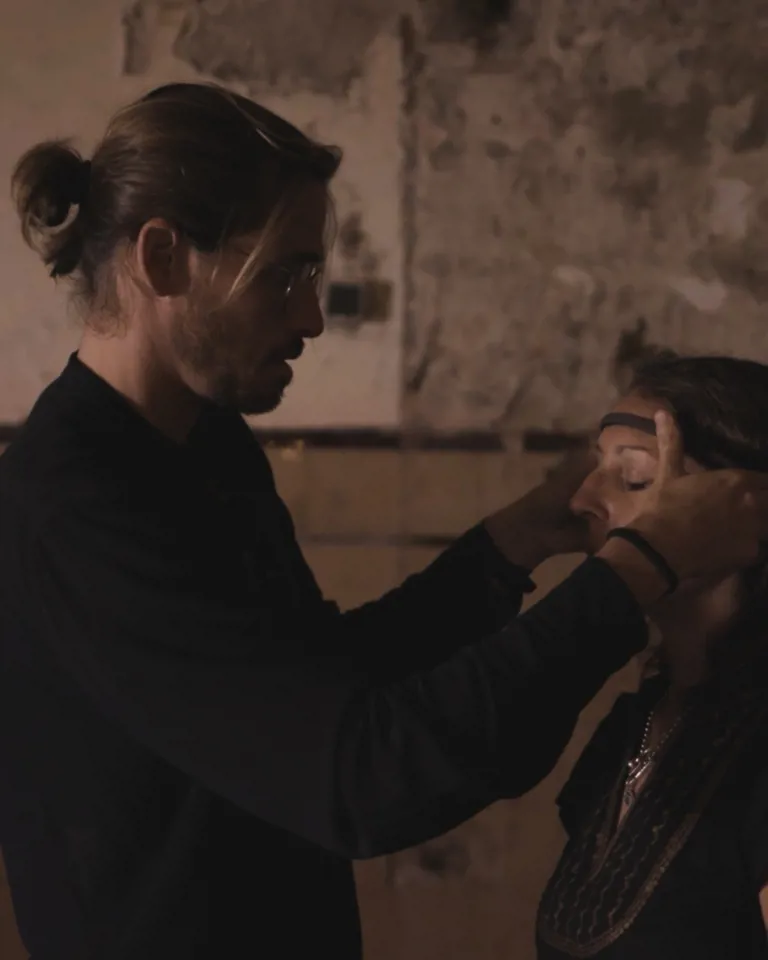
Francisco Marques-Teixeira, neuroscientist, psychologist, and co-founder of MuLabs, hopes to help people better understand their minds.
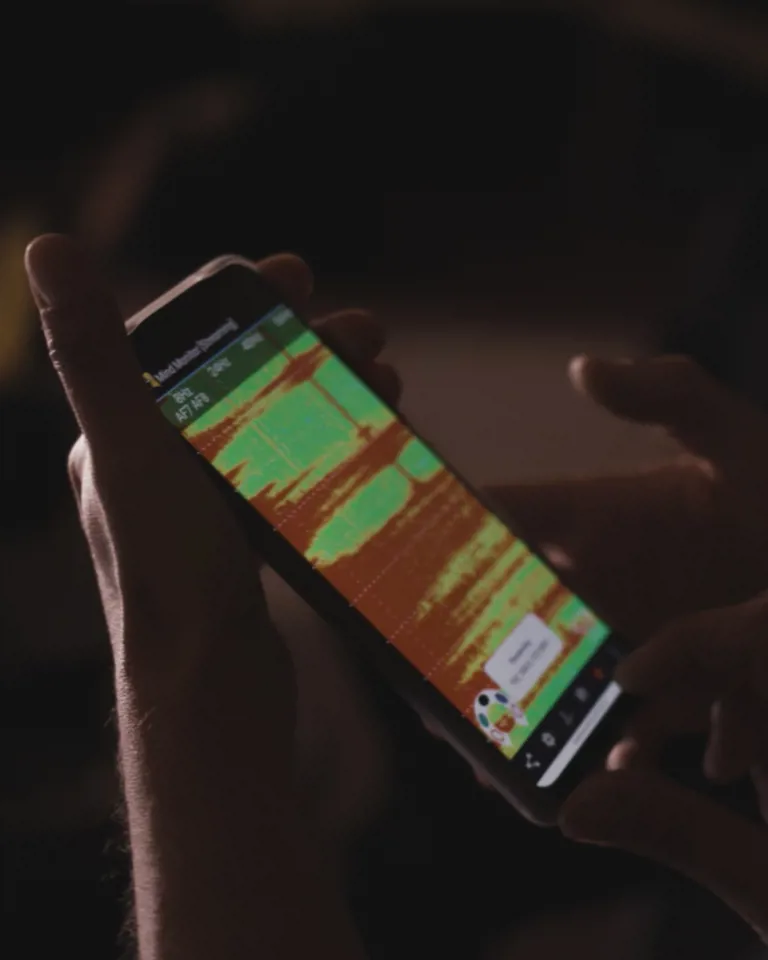
While inside the Voxel Cube, the artist is controlling some sequences of the visuals and the sound with her brainwaves.
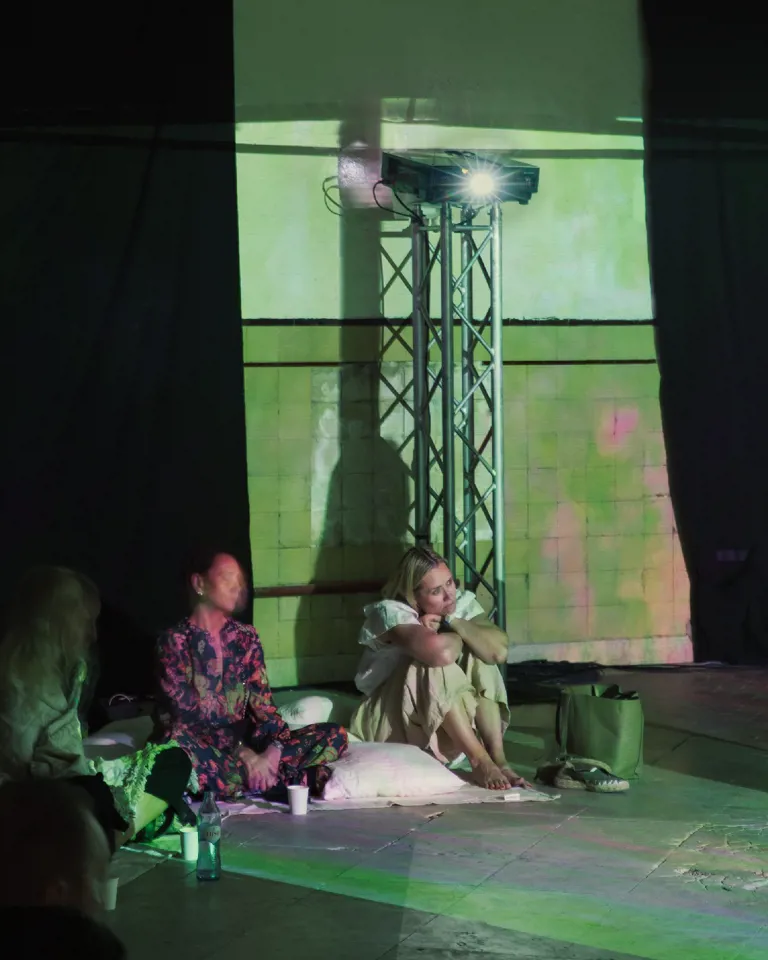
FMT: Our goal is to translate people’s physiological states through sensors and biodata. We do this for artistic performances, wellness, and clinical practices. People who want to understand their emotions and physiological states can use our technology—or our art—to learn more and train themselves through the interactivity between the brain and the machine. The goal is to give people more awareness about them themselves and try to enhance their abilities.
FMT: Through conditioning, it is possible to modulate brainwaves—thus brain states—to reduce neuropsychiatric symptoms. When the brain is working in a more healthy, harmonious, and coherent way, the audio-visual feedback becomes more pleasant. Through this change, the client can understand how their brain is, how it should be, and how they should change or modulate it. Through training systematically one or two times a week, the brain slowly starts moving in the direction of a healthier brain.
CP: For me personally, digital art and mixed video in a live performance is fantastic because I can let go and create. I used to draw, but video art and live mixing is my medium because I can escape from reality. Now, I paint with my computer.
CP: When I was younger, I always drew with pencil and paper and I didn't like tech. I was a purist. Then I completely changed my mind because I found a way to express myself with digital art. The digital helps me go far beyond the paper. With tech, I can do something more quickly and more directly with my truth.
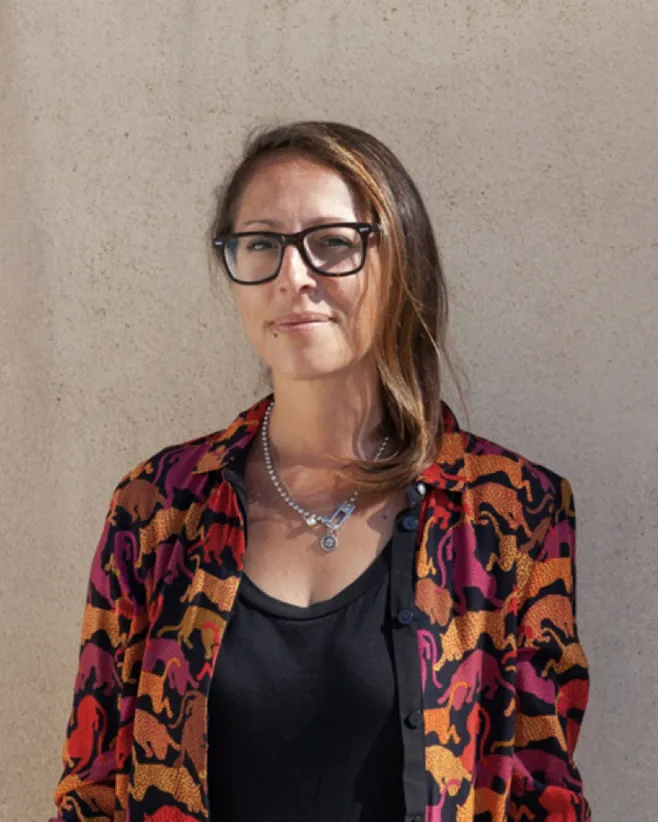
Carlotta Premazzi
FMT: I think having a vision is really important when you work at the forefront of technology because you don’t have an example to follow. You need to be bold because you will have some critics and people that are not going to believe in you, but that’s why you need to just do. Through doing, you can prove that it works and it actually can help people. So you need to be a visionary and you need to be a bit of a risky guy.

With its easy access to the mountains and the sea, Lisbon offers a healthy work-life balance to those working in tech.
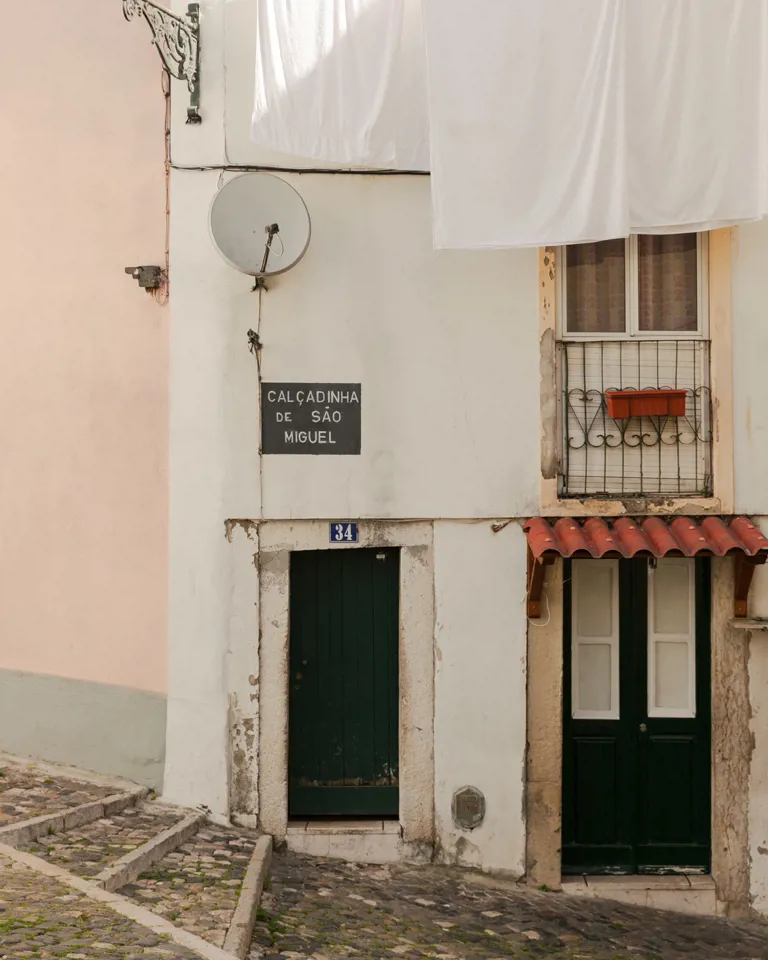
CP: I came here 16 years ago and I really don't know where my future will lead. I hope to have the possibility to continue to work in this field because I feel that I finally found my special field, the digital and interactive arts.
FMT: I believe that Lisbon now is becoming one of the meccas of tech and digital arts. For now, it’s still a cheap city, so you can have a very good lifestyle. You have the ocean, you have the mountains, and we have a lot of engineers and people connected to technology. So I believe that this combination between the good lifestyle and good labs, universities, and institutions to work with makes Lisbon a great place to work in technology.
And that combined with the Portuguese people that are still in Lisbon, the older generation that give heritage to the city. I think this “new side meets old side” is what makes it really special. That’s why I'm here.